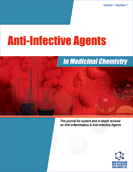Abstract
Oxazolidinones are important synthetic antibacterial agents useful for the treatment of multi antibiotic resistant Gram-positive bacterial infections. Since the launch of Linezolid, the first member of the oxazolidinone antibacterial family, there have been many studies directed towards structural optimization and the development of second generation oxazolidinones. The N-aryl 5-acetamido methyl oxazolidinone is the core structure for this class of antibacterial agents and the oxazolidinone component is essential for antibacterial activities. The chiral cyclic carbamate 5-hydroxymethyloxazolidin- 2-one and 6-hydroxymethyl-[1,3]oxazinan-2-one are also important building blocks for synthesizing other biologically active compounds. Because of the importance of these compounds, many methods have been developed for their facile syntheses. In the first part of this paper, the synthesis of Linezolid and its analogs, as well as the preparation of the oxazolidinone core structures, will be reviewed. Secondly, recent developments in the area of oxazolidinone antibacterial agents including structure-activity relationships will be reviewed.
Keywords: Linezolid, antibacterial agents, oxazolidinones, oxazinanones, synthesis
 41
41





















